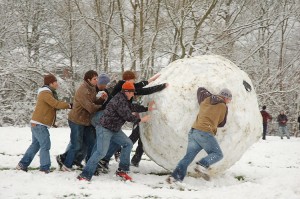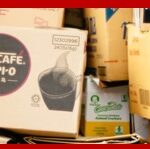What is a snowball sample?
As I write this, snowflakes are floating by my window making for the perfect winter setting. If I’m lucky, the temperature will hover at the precise point where it is both cold enough and warm enough — cold enough so the snow won’t melt and warm enough so the snow will stick together in a perfect sphere. If I’m really lucky, I’ll be able to push that snowball across the yard so that little by little, it will pick up snow along the way until it grows into a ball so big it will turn into the base of a snowman.
A snowball sample works in a similar way. First, you find a snowflake — one unique person who matches your targeting strategy by having the precise demographics and psychographics you need. Then, you carefully explain to them why it’s important to participate in your research project and why they should trust you as a partner, and they join you in your endeavor. With their trust gained, they recruit a few of their friends who also meet those precise demographic and psychographic characteristics — the snowball has grown by a few snowflakes. And so on, and so on, until each friend has reached out and grabbed the hand of another friend meeting the precise characteristics to form the perfect snowball.
You might also come across the terms chain sampling or referral sampling.

Is a snowball sample biased?
Absolutely! Actually, most samples are biased in one way or another, some much more and some much less. In the case of snowball samples, it is easy to see that they are biased because zero attempt to obtain a random sample has been made. In fact, you might find your sample includes people who have more friends than average, perhaps because they are ‘friendlier’ or more extroverted which allowed you to reach out to them to begin with. Or, they might be more likely to confess to socially undesirable behaviours, or less concerned about authority figures than the average person which allowed you to assess their suitability for the research.
Another potential bias with snowball samples is that it’s difficult to know whether you’ve discovered one extreme of the population, the moderates, or the other extreme of the population. You might not know where on the continuum of behaviour your sample lies.
However, the presence of bias doesn’t make snowball samples outright wrong or bad. It just means researchers must be aware of potential biases and be prepared to consider how it will affect any conclusions and recommendations coming out of the research.
Why would anyone ever use a snowball sample if we know they’re biased?
No lists: One of the most important reasons for using a snowball sample is that a comprehensive list of the target audience simply does not exist. In fact, there might not even be an incomplete or poorly prepared list. You might have no list at all. You’ll have to start from scratch by using a research recruiter who is skilled at creating good quality samples out of nothing.
Rare cases: How would a researcher find the ten people in the country, or maybe the 100 people in the world, who had a rare ailment? Instead of trying to find 100 people, why not start by finding one single person. Chances are that one person has sought out friendship, guidance, or advice from others in their situation, people who could help from a place of empathy and knowledge.
Illegal behaviours: How would a researcher find people who participated in underground or illegal activities? What if a researcher needed to listen to people who smoke pot to alleviate the stress and pain of having cancer, or if a researcher needed to better understand the issues that gay people deal with in a country where being gay is illegal? Chances are that the person who has cancer and the person who is gay would have a support network of at least one or two other people they regularly turn to.
If bias is a serious concern for you, think about it this way. Would you rather know nothing about a cancer patient’s experience of using illegal drugs as part of their personal health care plan or instead not conduct any research because the margin of error can’t be calculated.
Given the choice, it’s clear why some researchers turn to snowball samples as their best or only choice. Whether the research topic related to illegal activities (e.g., sex workers, drug users, criminals) or hard to find people (e.g., people who are ill, homeless people, people with rare skills or hobbies), you’ll be pleasantly surprised that finding one person can open the door to many more like-minded people.
It All Comes Down to Trust
As we’ve seen, snowball samples are often used to recruit people from unusual circumstances, people who might not ordinarily trust a researcher or who have reasons to be nervous about trusting a researcher. The unique aspect of this method is that the researcher only has to make an extraordinary effort to build trust with a few individuals, the original set of recruits. Once the researcher has proven to that one person, perhaps as part of an individual interview, that they are trustworthy, the hard part of the job is done. The new recruit will have an easier time gaining trust from other potential recruits than the original researcher and thereby make it much easier for the researcher to gain consent.
If you’d like to chat about a project that might benefit from snowball sampling, please get in touch with us. We’d love to help you work through your research objectives and figure out which recruitment method would be best for you.
You might like to read these:




